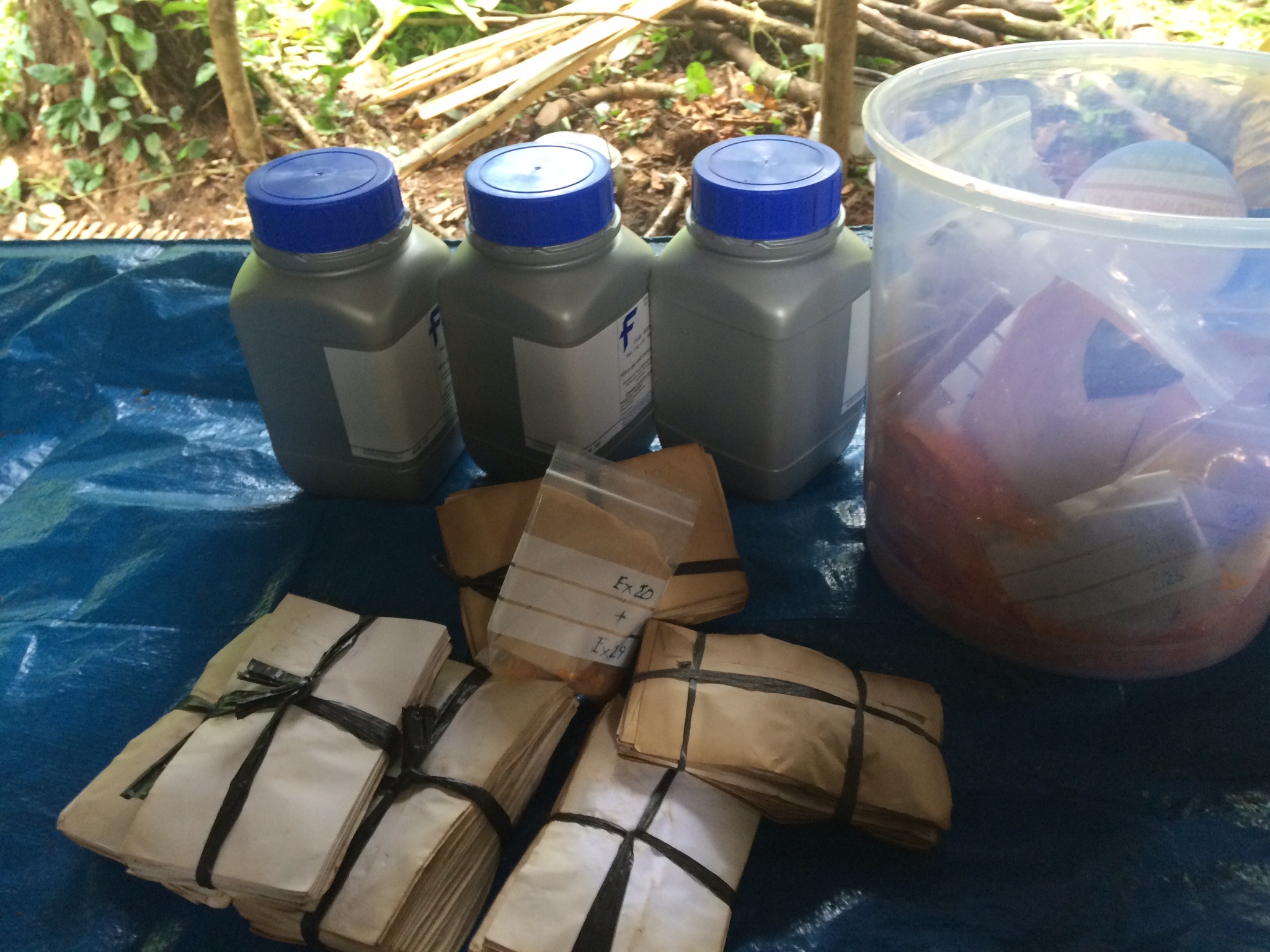Guest post by lab collaborator Dr. Liam Trethowan (Kew Royal Botanic Gardens) – results just published in Plant and Soil, open access.

Collecting leaf samples and herbarium specimens in the forests of Boloak.
The islands of the Southeast Asian archipelago have long shaped how we think about diversity (e.g. Wallace’s Malay archipelago published in 1869). How the Asian and Australian biotas mix and how this can precede global diversification has received much attention. The influence of the islands’ environment upon biota is less well known. There are many interesting aspects of the environment – perhaps the most intriguing is the tropics’ largest ultramafic outcrop found on the island of Sulawesi.
Ultramafic soils are nutrient poor and heavy metal rich and studying how these stressors impact plant communities (in California in particular) has increased our understanding of species coexistence and diversification. How ultramafics shape megadiverse tropical communities is more of a blank spot, however.
My job during my PhD was to work out how ultramafic soils affect Sulawesi’s tropical tree communities. To do this we simply looked at soil stoichiometry and observed how this influenced leaf stoichiometry. We sampled communities on ultramafic and non-ultramafic (limestone, mafic and sand) soils for comparison. This took me to forests on Sulawesi’s little explored eastern peninsulas and a satellite island called Wawonii. With the help of (achingly resourceful/good fun) guides from nearby villages we camped out under tarpaulin for weeks on end to collect our 700 plus leaf and soil samples.
A LOT of leaf digestion (low conc acid made my fingers go yellow) and ICP-OESing samples later we had concentration data for 12 different elements….
We first summarised all the relationships between soil and leaf elements – we didn’t pick up too many clear relationships, especially for the heavy metals found in ultramafic soil – though soil Cr did have a negative effect upon leaf P.
Ultramafic influence was most obvious when looking at a metric borrowed from the functional trait literature known as functional distinctiveness. What this metric does is take many variables – which could be plant height, SLA, wood density etc or each leaf element for our data and simplify them to a single measure that tells us how different species are from all others in a community.
Measurement of distinctiveness showed us that species on ultramafic soils were more different from one another – largely because more species were accumulating metals not available in non-ultramafic soil. This is interesting because the potentially toxic heavy metals in ultramafic soils are stressful for plants and stress tends to limit how varied species are. Think of the stresses upon high mountain plant communities – limited to hardy herbs – compared to the forests of the comfy wet tropics that have an herb layer, multiple understorey layers, the canopy and emergents (plus epiphytes). So, whereas there are less distinct plant traits on stressful mountaintops there is more distinct plant stoichiometry on stressful ultramafic soils. Something different seems to be going on in ultramafic rich areas – stress seems to be offering more viable strategies.

Aga and Yesaya at camp on Gunung Tompotika.

Dried leaf samples for chemical analysis stored in envelopes. Also leaf samples dried in Si for DNA extraction.



